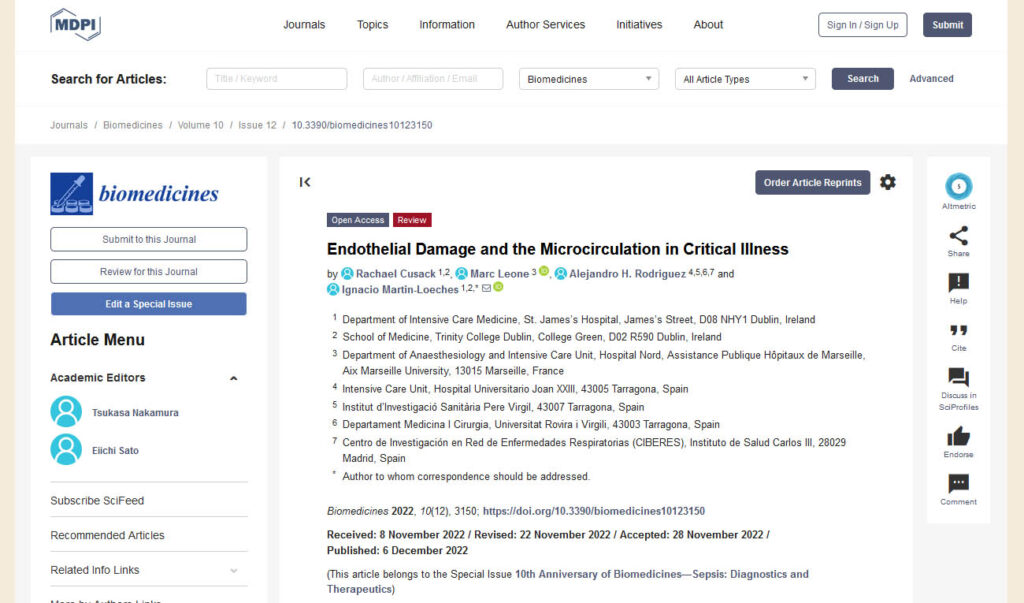Abstract
Endothelial integrity maintains microcirculatory flow and tissue oxygen delivery. The endothelial glycocalyx is involved in cell signalling, coagulation and inflammation. Our ability to treat critically ill and septic patients effectively is determined by understanding the underpinning biological mechanisms. Many mechanisms govern the development of sepsis and many large trials for new treatments have failed to show a benefit. Endothelial dysfunction is possibly one of these biological mechanisms. Glycocalyx damage is measured biochemically. Novel microscopy techniques now mean the glycocalyx can be indirectly visualised, using sidestream dark field imaging. How the clinical visualisation of microcirculation changes relate to biochemical laboratory measurements of glycocalyx damage is not clear. This article reviews the evidence for a relationship between clinically evaluable microcirculation and biological signal of glycocalyx disruption in various diseases in ICU. Microcirculation changes relate to biochemical evidence of glycocalyx damage in some disease states, but results are highly variable. Better understanding and larger studies of this relationship could improve phenotyping and personalised medicine in the future. Damage to the glycocalyx could underpin many critical illness pathologies and having real-time information on the glycocalyx and microcirculation in the future could improve patient stratification, diagnosis and treatment.


